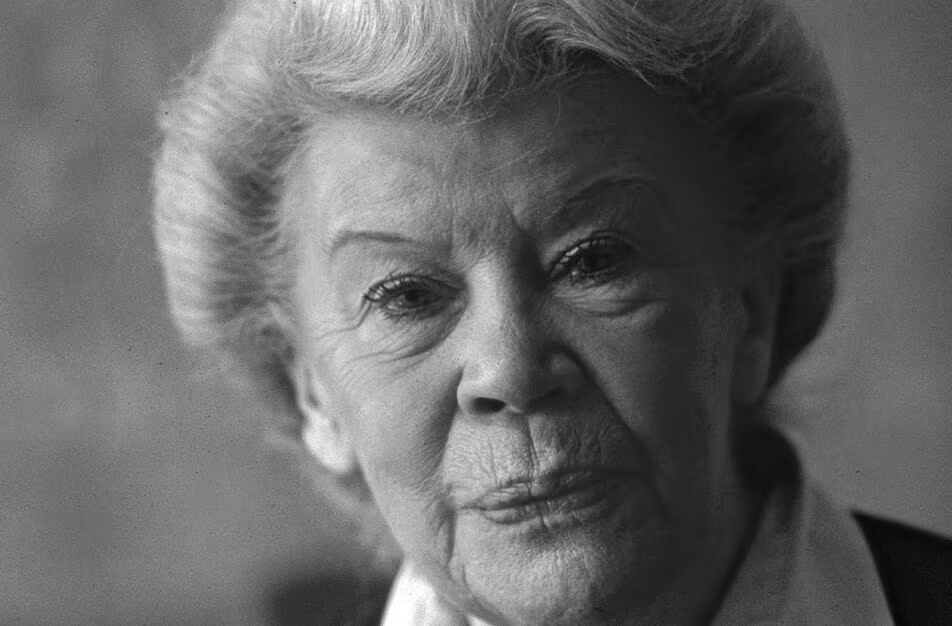
"Her work speaks for itself!" - Klässbol's Linneväveri
Is textile art hereditary, Astrid Sampe? The English usually claim that it takes three generations to make a gentleman. You are tempted to believe in the importance of heritage when you see what Astrid Sampe and the weaver brothers in Klässbol achieve. Astrid Sampe is the third generation in an old fine textile family from Borås. Grandfather's name was Samuel Petterson, hence the internationally famous name Sampe. The Johansson brothers in Klässbol successfully run the linen weaving factory that their grandfather started more than 60 years ago.
Now Klässbol weaves Astrid Sampe's patterns To enumerate all the merits and awards of our world-famous textile artist would take up an enormous amount of space. But as well-known as Astrid Sampe is, a few facts should suffice. It is her work that speaks.
Astrid Sampe was born in Stockholm in 1909 and since she was an only child, a textile career was probably quite obvious at an early stage. 1928-32 she studied at the Art School in Stockholm and at the Royal College of Art in London. In 1937 she helped start NK's Textile Chamber, whose leader she was until it was closed in 1971, in 1937 she also managed to participate in the world exhibition in Paris. In 1939 it was time for the World Exhibition in New York and in 1946 she arranged together with Elias Svedberg "Modern Swedish Home" at the London Building. In 1949, Astrid Sampe was appointed Royal Designer, Hon. RDI, by the Royal Society of Arts and in 1951 she had the first fiberglass fabrics woven. 1954 Grand Prix Triennale in Milan. In 1956 she received the Gregor Paulsson statuette. In 1957, she showed apartment interiors in the Swedish apartment building at "Interbau" in Berlin, in 1959 she was commissioned to furnish the women's prison in Hinseberg, the Swedish embassy in Tokyo as well as other assignments for the Building Authority.
In 1961, she was commissioned by the United Nations to design carpets for the Dag Hammarskjöld Library in New York. In the same year, Astrid Sampe received the Vasa Order. In 1963 she became a member of the American Institute of Interior Designers, AID. During the rest of the 60s, she managed to organize the exchange exhibition "Living off Trays" between the Council of Industrial Design and Peter Jones in London as well as the Swedish Institute and NK, newly furnished the state's representative residence at Haga Slott, furnished M/S Saga, M/S Patricia and M/S Hispania as well as show a retrospective exhibition at Borås museum. Astrid Sampe began the 70s by making the first data-based textile patterns in Sweden, being a textile consultant for the interiors of Hotel Reisen, the Concert House and Trygg-Hansa's new house, all in Stockholm. During the 70s, Astrid Sampe also managed to be a consultant for the interior design of Borås' new cultural center, theater and museum, and in 1980 she was awarded HM the King's medal, 8th size in high blue ribbon. She began the 80s by, among other things, participating as a consultant in the decoration of the Speaker's residence in the Riksdag House and the Speaker's representative residence, as well as becoming an honorary member of KIF-STOK.
In the spring of 1984, Astrid Sampe was honored with an exhibition at the National Museum in Stockholm, "Astrid Sampe – Swedish industrial textiles" The exhibition was then shown during the summer at the Borås Art Museum. In 1984, Handarbetets Vänner awarded Astrid Sampe her medal established by Sofie Adiersparre in 1874. After her death in 2002, her unique design lives on i.a. through Klässbol's Linneväveri.

